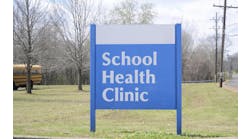It’s no wonder that when it comes to health information exchange (HIE), Laura McCrary, Ed.D. executive director of the Kansas Health Information Network (KHIN) based in Topeka, Ks., is looked at as a bit of a rock star.
McCrary’s KHIN has gotten more than 300 providers on board with the Kansas statewide HIE, it has sent direct messages across state lines to Missouri and Nebraska, it became the first HIE to connect to the CDC’s surveillance system, and most recently, KHIN transmitted immunization data to a web-based state registry.
Naturally, McCrary feels KHIN is far from done in the State of Kansas. She says the organization hopes to get even more providers signed up as well as establish a statewide patient portal that would help providers meet Stage 2 meaningful use measures. But thus far, it’s fair to say the organization has already accomplished a good amount.
With this impressive background, McCrary herself has spoken at numerous trade conferences including the eHealth Initaitive’s annual conference, the Institute for Technology Transformation’s conference, and now, HIMSS13. McCrary sat down for an exclusive interview HCI’s Associate Editor Gabriel Perna at HIMSS13 to discuss some of the organization’s various initiatives.
Below are excerpts from that interview.
As we get into HIMSS13, what subject is on the top of your mind?
A key focus for KHIN is to help our providers meet meaningful use Stage 2. A lot of those requirements can be met through health information exchange. Some of them are going to have to be met through health information exchange. That’s a key focus for me. How can we leverage health information exchange to help our providers meet meaningful use Stage 2. That’s what my presentation is about. How can we meet those public health measures, connecting to the immunization registry, sending data for syndromic surveillance, being able to do electronic lab reporting for reportable diseases, being able to connect to the cancer registry, having a personal health record that can go across the entire state, and not tethered to an individual practice of vendor. All of those things are really important for providers to meet Stage 2 meaningful use, and health information exchanges are in the best position to facilitate that.
Talk about this initiative where you’re sharing immunization data with the state registry, how did that come about and what can it do for you?
We’ve been working on this a while. It is a stage 1 requirement, it wasn’t a new idea, we’ve been working with ICA for a while. It is so important for our immunization registry to have complete information on the children in our state. Because it’s not required to send it to the registry, because of the enormous man hours that are involved to enter the information into a web portal, people just didn’t do it. Our registry wasn’t very valuable in terms of being able to look for comprehensive data on a child or a patient. Our first facility that we brought up was an FQHC [federally qualified health centers] that provides 15,000 immunizations to children each year. And they hadn’t entered the information into WebIZ (Kansas’ immunization registry), because it’s so time consuming to manually enter 15,000 immunizations. So right away we were able to solve an administration burden and improve the accuracy of the immunization registry. We think it’s a win-win. It’s a win for the state, it’s a win for the patients, and it’s a win for the clinic.
The next phase is a bi-directional interface, and we’re working with ICA [Informatics Corporation of America, Nashville, Tenn.) to build the XCA [cross community access] gateway for all of the public health data in the state of Kansas. You will query the XCA gateway, and pull back immunization data, and maybe Medicaid data.
You guys have been able to get a lot of providers on board with the HIE, what have been your strategies in this area?
The fact that KHIN is a provider governed health information exchange really elicits the trust of th providers in Kansas. My board chair is the executive director of the State Kansas Medical Society, my vice-chair is the executive director of the state hospital association. The most important element for the HIE to be successful is that the providers they trust the health information exchange is going to work in their best interests.
This is about patient safety, about saving patients lives. That has to be the core message. Every hospital you visit, every community health center, every provider, you need to tell them they need to participate because we’re going to save lives. And if you don’t participate we could be without critical life-saving data that could harm your patients.


